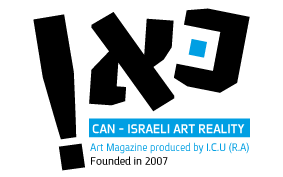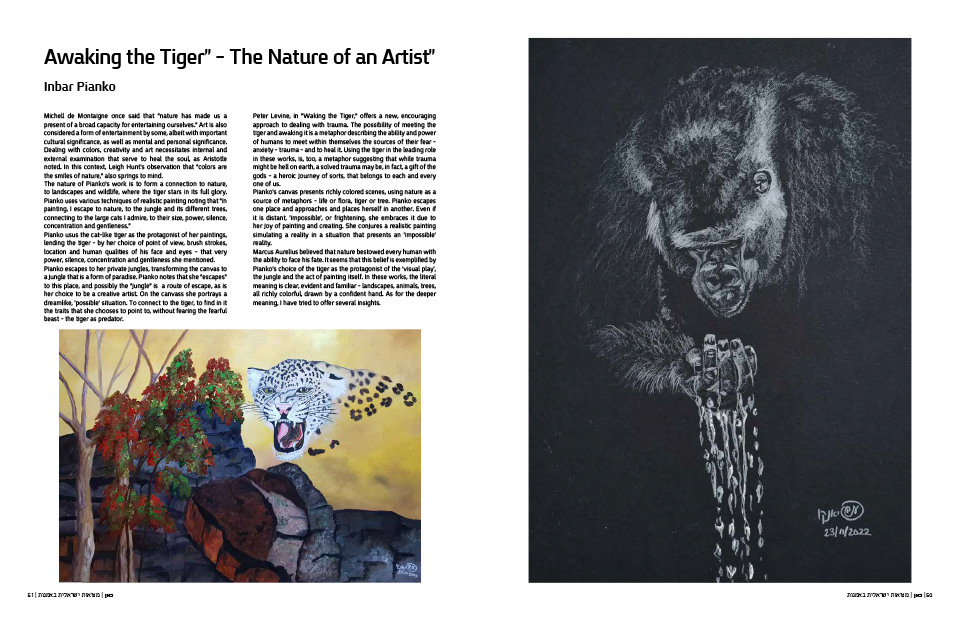
| Home Page | Editor Notices | Museums | Galleries | Publication | Donation | Contact Us |


 | |||||||||||||||
| |||||||||||||||


| |||||||||||||||
| Inbar Pianko |
Michell de Montaigne once said that "nature has made us a present of a broad capacity for entertaining ourselves." Art is also considered a form of entertainment by some, albeit with important cultural significance, as well as mental and personal significance. Dealing with colors, creativity and art necessitates internal and external examination that serve to heal the soul, as Aristotle noted. In this context, Leigh Hunt's observation that "colors are the smiles of nature," also springs to mind. The nature of Pianko's work is to form a connection to nature, to landscapes and wildlife, where the tiger stars in its full glory. Pianko uses various techniques of realistic painting noting that "in painting, I escape to nature, to the jungle and its different trees, connecting to the large cats I admire, to their size, power, silence, concentration and gentleness." Pianko usus the cat-like tiger as the protagonist of her paintings, lending the tiger – by her choice of point of view, brush strokes, location and human qualities of his face and eyes – that very power, silence, concentration and gentleness she mentioned. Pianko escapes to her private jungles, transforming the canvas to a jungle that is a form of paradise. Pianko notes that she "escapes" to this place, and possibly the "jungle" is a route of escape, as is her choice to be a creative artist. On the canvass she portrays a dreamlike, 'possible' situation. To connect to the tiger, to find in it the traits that she chooses to point to, without fearing the fearful beast – the tiger as predator. Peter Levine, in "Waking the Tiger," offers a new, encouraging approach to dealing with trauma. The possibility of meeting the tiger and awaking it is a metaphor describing the ability and power of humans to meet within themselves the sources of their fear – anxiety – trauma – and to heal it. Using the tiger in the leading role in these works, is, too, a metaphor suggesting that while trauma might be hell on earth, a solved trauma may be, in fact, a gift of the gods – a heroic journey of sorts, that belongs to each and every one of us. Pianko's canvas presents richly colored scenes, using nature as a source of metaphors – life or flora, tiger or tree. Pianko escapes one place and approaches and places herself in another. Even if it is distant, 'impossible', or frightening, she embraces it due to her joy of painting and creating. She conjures a realistic painting simulating a reality in a situation that presents an 'impossible' reality. Marcus Aurelius believed that nature bestowed every human with the ability to face his fate. It seems that this belief is exemplified by Pianko's choice of the tiger as the protagonist of the 'visual play', the jungle and the act of painting itself. In these works, the literal meaning is clear, evident and familiar – landscapes, animals, trees, all richly colorful, drawn by a confident hand. As for the deeper meaning, I have tried to offer several insights. Read more  |
| all rights reserved - CAN ISRAELI ART REALITY |
| סייבורג מחשבים - בניית אתרים |